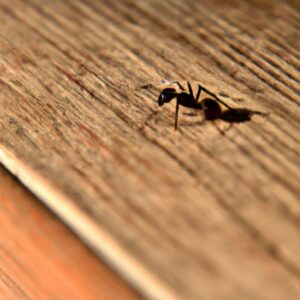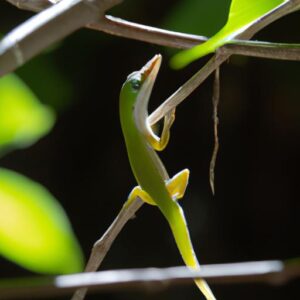Introduction
Are you a passionate cichlid enthusiast? If so, you may have wondered about the compatibility between peacock cichlids and African cichlids. These stunningly beautiful fish can add a vibrant touch to your aquarium, but it’s crucial to understand their compatibility before introducing them into the same tank. In this article, we will explore the intriguing world of peacock cichlids and African cichlids, shedding light on whether they can coexist harmoniously.
Peacock cichlids, known for their striking colors and graceful demeanor, originate from Lake Malawi in East Africa. On the other hand, African cichlids encompass a diverse group of fish species found in various lakes across the African continent. Both types of cichlids have their unique traits and characteristics, making them fascinating additions to any aquarium.
Understanding the compatibility between different cichlid species is crucial for maintaining a healthy and harmonious aquatic environment. Introducing incompatible fish can lead to territorial disputes, aggression, and even fatalities. Therefore, before deciding to house peacock cichlids with African cichlids, it’s important to delve deeper into their respective behaviors, requirements, and potential challenges.
So, let’s dive into the world of peacock cichlids and African cichlids, exploring their differences and similarities, and ultimately discovering whether they can peacefully coexist in the same aquarium.
Peacock Cichlids and African Cichlids: An Overview
A. Characteristics of Peacock Cichlids
Peacock cichlids, scientifically known as Aulonocara, are renowned for their breathtaking colors and unique patterns. These vibrant fish showcase a wide range of hues, including blues, yellows, oranges, and reds, resembling the mesmerizing plumage of peacocks. With their elongated bodies and graceful swimming style, peacock cichlids are truly a sight to behold.
Apart from their stunning appearance, peacock cichlids are known for their relatively peaceful nature compared to other cichlid species. They tend to be less aggressive and territorial, making them more compatible with a variety of tank mates. However, it’s important to remember that individual temperament can vary, and some peacock cichlids may exhibit territorial behavior, especially during breeding periods.
B. Characteristics of African Cichlids
African cichlids, as a diverse group, encompass various species originating from the African Great Lakes, particularly Lake Malawi, Lake Tanganyika, and Lake Victoria. These cichlids come in a stunning array of colors and patterns, reflecting the rich biodiversity of their natural habitats. African cichlids are known for their robust nature, adaptability, and active behavior.
One notable characteristic of African cichlids is their tendency towards aggression. This aggression stems from their territorial instincts, which are particularly pronounced during spawning and breeding periods. While some African cichlids can coexist peacefully with other fish, it’s important to choose compatible tank mates to avoid conflicts and ensure a harmonious aquarium environment.
C. Differences in Habitat and Behavior
The habitat and behavior of peacock cichlids and African cichlids differ in several aspects. Peacock cichlids primarily inhabit rocky areas and sandy substrates in Lake Malawi, where they display a preference for caves and crevices. They are more inclined towards open water swimming, showcasing their vibrant colors as a means of attracting mates and asserting dominance.
On the other hand, African cichlids are known for their adaptability to various habitats within the African Great Lakes. They can be found near rocky shores, sandy bottoms, and even in open waters. African cichlids exhibit a wide range of behaviors, including digging, burrowing, and defending territories. Their aggression levels and territorial nature are more pronounced compared to peacock cichlids.
Understanding these differences in characteristics, habitat preferences, and behavior lays the foundation for comprehending the compatibility factors between peacock cichlids and African cichlids. In the next section, we will delve into the crucial factors to consider when determining whether these two cichlid species can live together harmoniously.
Compatibility Factors to Consider
When considering the compatibility between peacock cichlids and African cichlids, there are several crucial factors to take into account. These factors will determine whether these two species can thrive together in the same tank. Let’s explore the key compatibility factors in detail:
A. Water requirements and parameters
Cichlids, including both peacock cichlids and African cichlids, have specific water requirements that must be met for their optimal health and well-being. It is essential to ensure that the water parameters, such as temperature, pH level, and hardness, align with the needs of both species.
Peacock cichlids generally prefer slightly warmer water temperatures ranging from 76°F to 82°F (24°C to 28°C). They thrive in slightly alkaline to neutral pH levels, typically between 7.5 and 8.5. On the other hand, African cichlids are known for their preference for higher pH levels, often ranging from 7.8 to 9.0.
When considering compatibility, it is vital to find a balance that suits both species. Gradual acclimation to the desired water parameters is crucial to reduce stress and ensure a smooth transition for both peacock cichlids and African cichlids.
B. Size and aggression levels
Another critical factor to consider is the size and aggression levels of the cichlids. Peacock cichlids are generally peaceful and less aggressive compared to their African cichlid counterparts. However, it’s important to note that aggression can vary within each species, and individual fish may exhibit different temperaments.
To minimize the risk of aggression, it is advisable to house cichlids of similar sizes together. Mixing significantly larger and smaller cichlids can lead to territorial disputes and potential harm to the smaller fish. Observing the behavior of the fish during the initial introduction is crucial to ensure compatibility.
C. Feeding habits and dietary needs
Peacock cichlids and African cichlids have different feeding habits and dietary needs. Peacock cichlids are primarily omnivorous, requiring a varied diet consisting of high-quality pellets, flakes, and occasional live or frozen food. On the other hand, African cichlids are predominantly herbivorous, relying on a diet rich in plant matter.
To ensure compatibility, it is essential to provide a balanced diet that meets the nutritional requirements of both species. Feeding strategies should be implemented to minimize aggression during feeding times and ensure that all fish receive adequate nutrition.
By carefully considering these compatibility factors, you can create a harmonious environment for peacock cichlids and African cichlids to coexist peacefully in your aquarium. In the next section, we will explore whether it is indeed possible for these two cichlid species to live together.
Can Peacock Cichlids Live with African Cichlids?
Case Studies and Experiences
One way to gain insights into the compatibility between peacock cichlids and African cichlids is to explore real-life case studies and experiences of aquarists. Many enthusiasts have successfully kept these two cichlid species together, reporting positive outcomes. These accounts indicate that under certain conditions, peacock cichlids and African cichlids can coexist peacefully.
Pros and Cons of Keeping Them Together
Before making a decision, it’s essential to weigh the advantages and disadvantages of housing peacock cichlids with African cichlids. On the positive side, combining these vibrant species can create a visually stunning aquarium display. The contrasting colors and behaviors of peacock cichlids and African cichlids can be a captivating sight for any observer. Additionally, both types of cichlids share similar water parameter requirements, simplifying maintenance.
However, there are potential drawbacks to consider as well. African cichlids are known for their territorial nature and aggression, especially during breeding periods. Peacock cichlids, on the other hand, tend to be less aggressive but can become targets of aggression from their African counterparts. This can lead to stress, injuries, and even fatalities if proper measures are not taken to manage aggression levels.
Factors that Determine Successful Cohabitation
Several factors play a crucial role in determining whether peacock cichlids can live harmoniously with African cichlids. Firstly, the size of the tank is vital. Providing ample space for both species to establish their territories and swim freely can help reduce aggression. Secondly, carefully selecting compatible individuals within each species is important. Mixing fish with similar temperaments and sizes can minimize conflicts.
Additionally, monitoring the tank closely and observing individual behavior is essential. Identifying signs of stress or aggression allows for timely interventions to protect the well-being of all fish involved. Proper feeding strategies, such as providing multiple feeding stations or using floating food pellets, can also help reduce competition and aggression during mealtime.
By considering these factors and implementing appropriate measures, the chances of successful cohabitation between peacock cichlids and African cichlids can significantly improve. However, it’s crucial to remain cautious and prepared to make adjustments if conflicts arise.
In the next section, we will explore some practical tips to enhance the compatibility between these two fascinating cichlid species.
Conclusion
In conclusion, the compatibility between peacock cichlids and African cichlids can be a delicate balance. While it is possible for them to coexist in the same aquarium, careful consideration must be given to their specific needs and temperaments.
When setting up your tank for peacock cichlids and African cichlids, create ample hiding spots and territories with rocks, caves, and plants. This will help alleviate aggression and provide a sense of security for both species. Additionally, ensure that the tank size is appropriate to accommodate the cichlids’ growth and territorial behavior.
Feeding strategies play a crucial role in minimizing aggression. Provide a varied diet that meets the nutritional needs of both peacock cichlids and African cichlids, including high-quality pellets, live or frozen foods, and occasional vegetable matter. By offering multiple feeding areas and spreading the food out, you can reduce competition and aggression during meal times.
Monitoring and managing aggression levels are essential for maintaining a peaceful environment. Pay close attention to any signs of aggression, such as chasing, fin-nipping, or territorial disputes. If necessary, rearrange tank decorations or separate aggressive individuals to diffuse tension and prevent harm.
Remember, every cichlid is unique, and some individuals may exhibit more aggression than others. It’s crucial to observe their behavior and make adjustments accordingly. Always prioritize the well-being of your fish and be prepared to make changes if necessary.
In the end, successful cohabitation between peacock cichlids and African cichlids is possible with the right approach and careful attention to their specific requirements. By creating a well-planned and harmonious environment, you can enjoy the beauty and diversity of these magnificent cichlid species in your aquarium.




